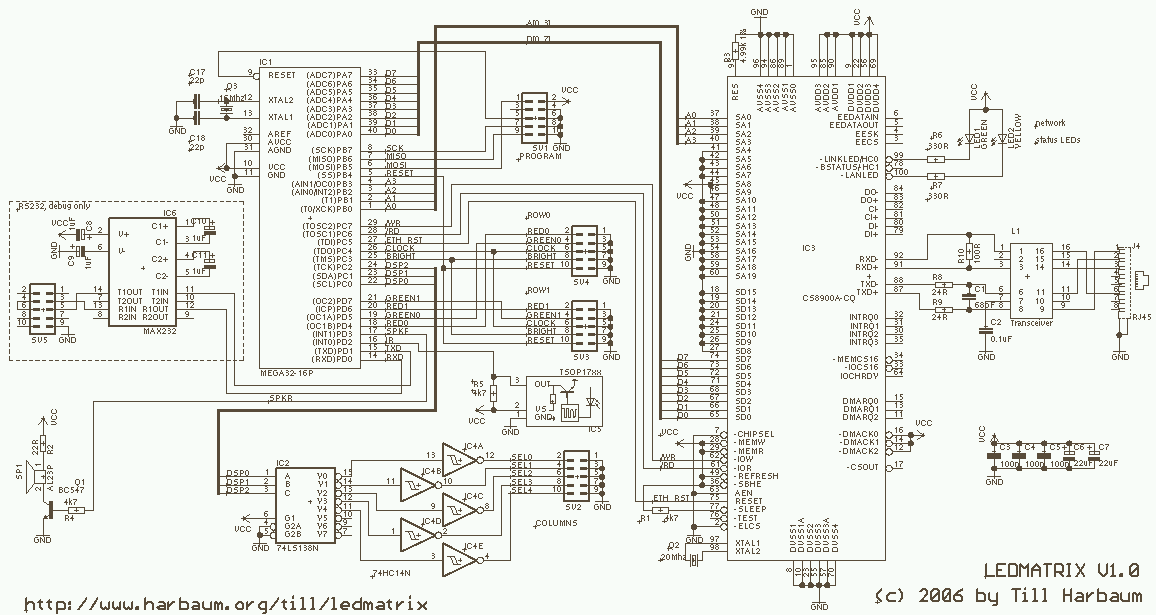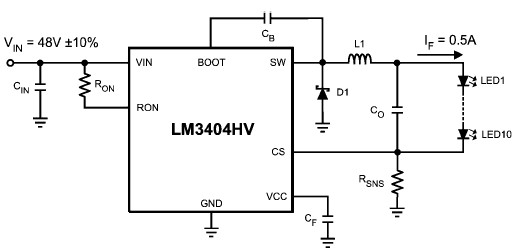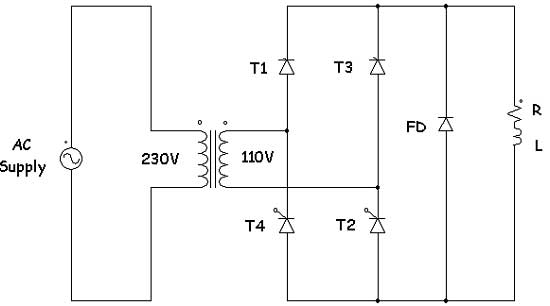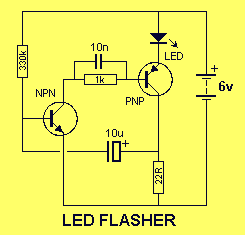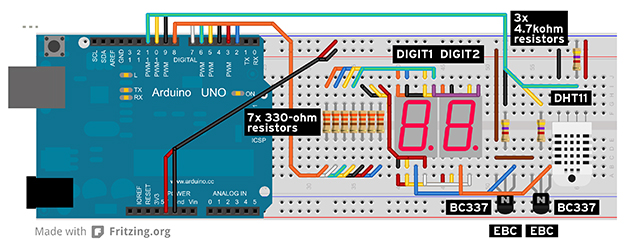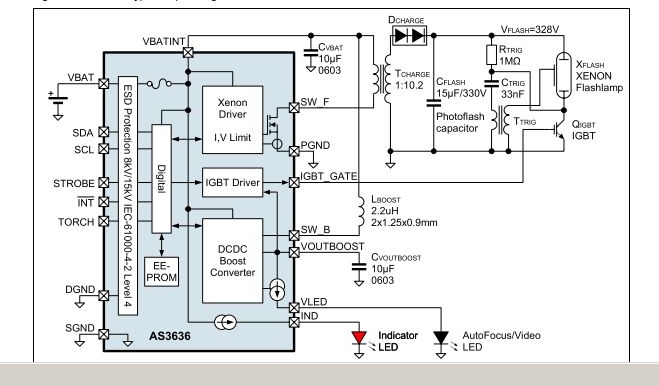
dual led flasher by 2n2907
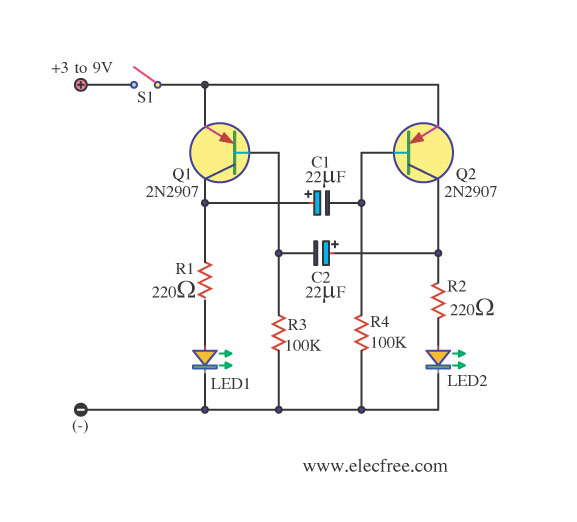
This circuit operates as a free-running multivibrator, resembling a flip-flop. It continuously oscillates on its own. The transistors Q1 and Q2 are PNP types, commonly used models include the 2N3906 and 2N2907. Resistors R1 and R2 limit the current flowing through the LED, which is bidirectional. Increasing the capacitance values of C1 and C2 will slow down the flashing rate of the LED. Enjoy experimenting with this LED flasher circuit.
The described circuit functions as a basic free-running multivibrator, which is an essential building block in digital electronics. The oscillation is achieved through the interplay of two PNP transistors, Q1 and Q2, configured in a feedback loop. When power is applied, one transistor turns on, allowing current to flow through its collector-emitter path, which in turn biases the other transistor into conduction. This feedback causes the transistors to switch states alternately, creating a square wave output.
The choice of transistors, such as the 2N3906 or 2N2907, ensures that the circuit can operate effectively with typical supply voltages and provides adequate current gain. The resistors R1 and R2 are critical for controlling the base current of the transistors, thereby regulating the brightness of the LED and preventing excessive current that could damage the components. The LED serves as a visual indicator of the oscillation, flashing on and off as the circuit operates.
Capacitors C1 and C2 are integral to determining the timing characteristics of the circuit. By adjusting their values, the time period of the oscillation can be modified, resulting in a faster or slower flash rate of the LED. Larger capacitance values will increase the time constant, thus slowing the flashing effect, while smaller values will produce a quicker flash.
This circuit can be utilized in various applications, including visual indicators, timers, and simple light effects. It serves as an excellent project for beginners looking to understand the principles of oscillation and transistor operation in electronic circuits. Proper attention should be given to component ratings and power supply to ensure reliable performance.This circuit calls more Free Running Multivibrator work resemble Flip Flop. Which encourage itself repeatedly. The Q1 and Q2 be Transistor PNP be usable general (2N3906, 2N2907, etc. ) The R1 and R2 limit current that flow through LED the bilateral. If enhance the value C1 and C2 the rate something Flasher slow down. Request friends have fun LED Fla sher, this please sir. 🔗 External reference
The described circuit functions as a basic free-running multivibrator, which is an essential building block in digital electronics. The oscillation is achieved through the interplay of two PNP transistors, Q1 and Q2, configured in a feedback loop. When power is applied, one transistor turns on, allowing current to flow through its collector-emitter path, which in turn biases the other transistor into conduction. This feedback causes the transistors to switch states alternately, creating a square wave output.
The choice of transistors, such as the 2N3906 or 2N2907, ensures that the circuit can operate effectively with typical supply voltages and provides adequate current gain. The resistors R1 and R2 are critical for controlling the base current of the transistors, thereby regulating the brightness of the LED and preventing excessive current that could damage the components. The LED serves as a visual indicator of the oscillation, flashing on and off as the circuit operates.
Capacitors C1 and C2 are integral to determining the timing characteristics of the circuit. By adjusting their values, the time period of the oscillation can be modified, resulting in a faster or slower flash rate of the LED. Larger capacitance values will increase the time constant, thus slowing the flashing effect, while smaller values will produce a quicker flash.
This circuit can be utilized in various applications, including visual indicators, timers, and simple light effects. It serves as an excellent project for beginners looking to understand the principles of oscillation and transistor operation in electronic circuits. Proper attention should be given to component ratings and power supply to ensure reliable performance.This circuit calls more Free Running Multivibrator work resemble Flip Flop. Which encourage itself repeatedly. The Q1 and Q2 be Transistor PNP be usable general (2N3906, 2N2907, etc. ) The R1 and R2 limit current that flow through LED the bilateral. If enhance the value C1 and C2 the rate something Flasher slow down. Request friends have fun LED Fla sher, this please sir. 🔗 External reference
